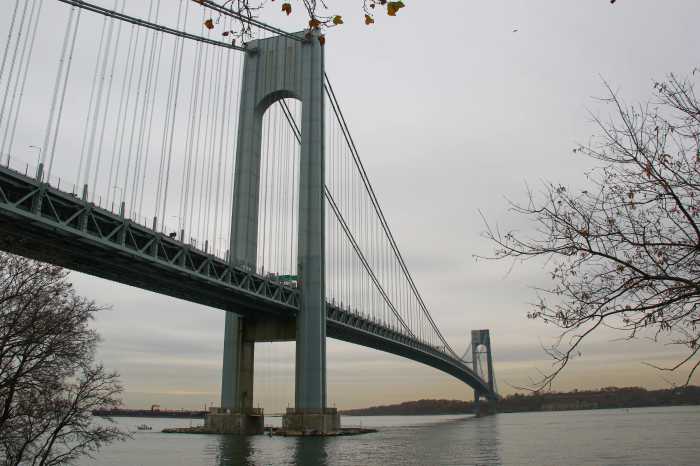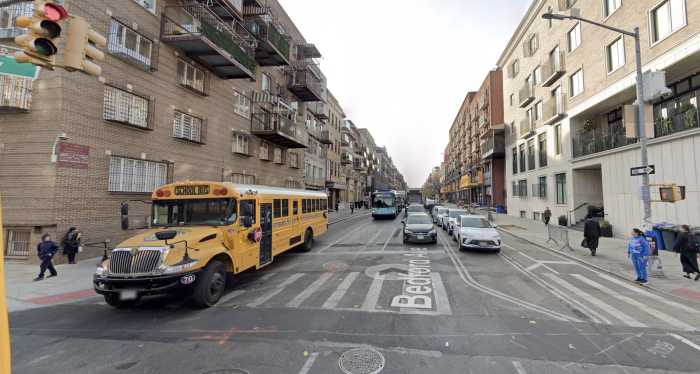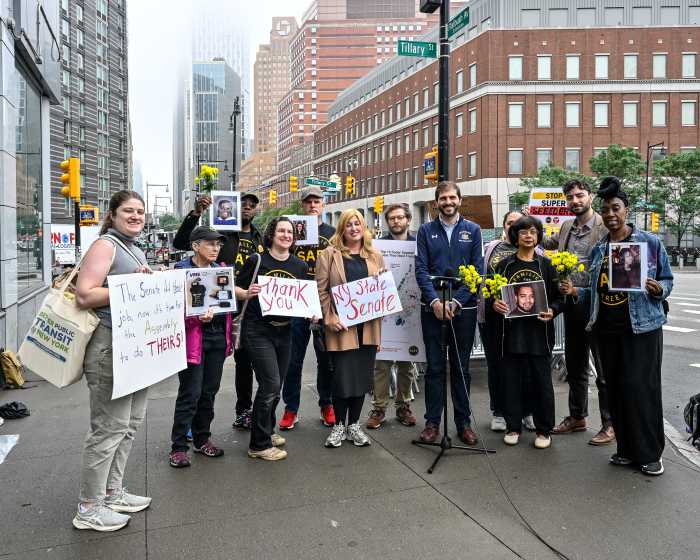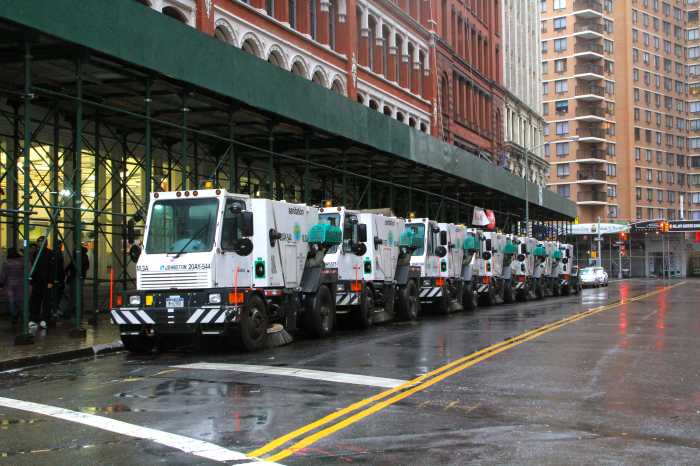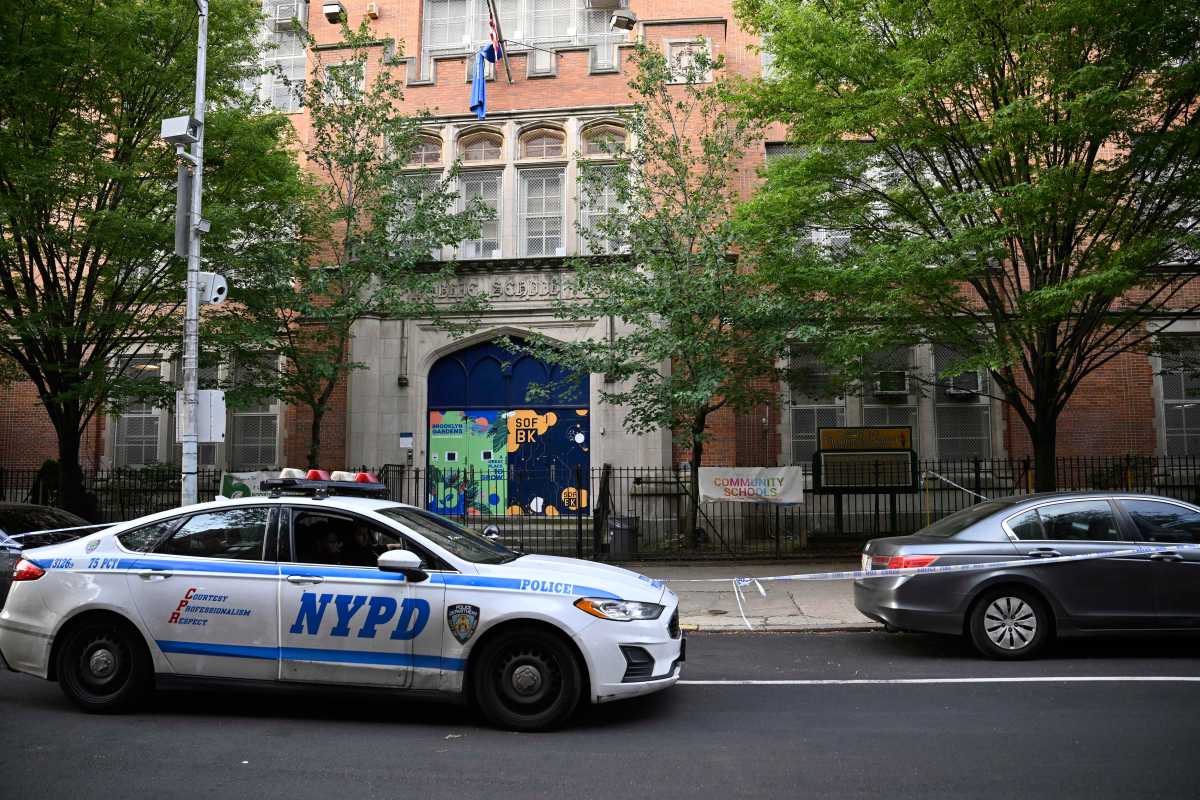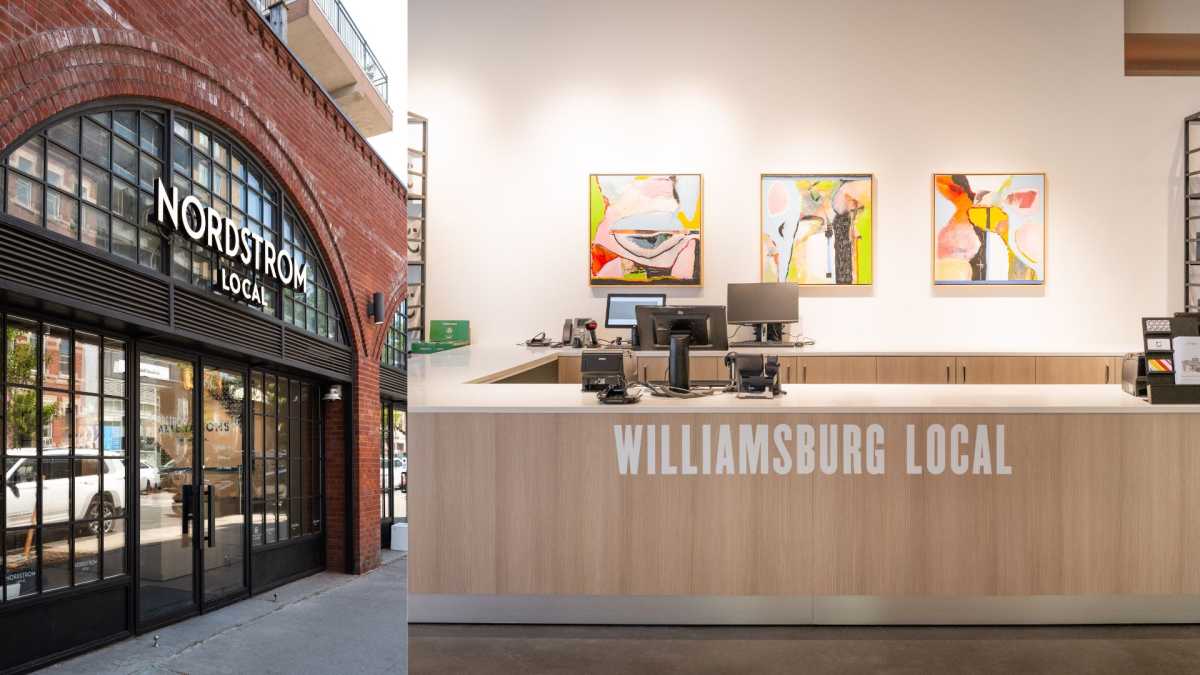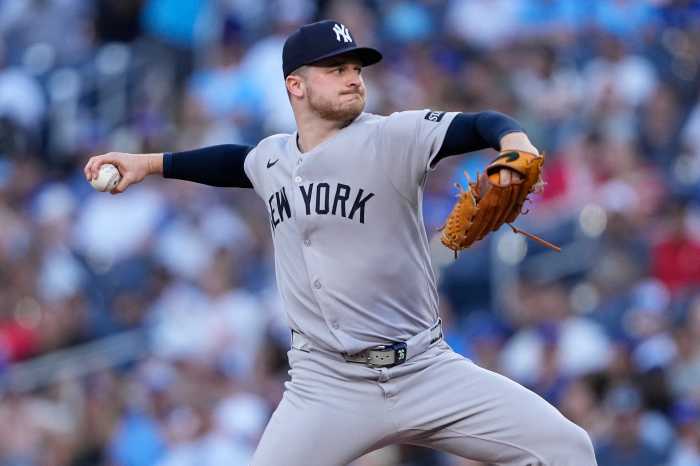A group of Park Slope residents is urging the city to convert the one-way speedways of Prospect Park West and Eighth Avenue into two-way streets in hopes of avoiding the kinds of car-bike conflicts that killed a cyclist last month.
At a neighborhood traffic forum on Wednesday, Slopers argued that reconfiguring Prospect Park West and Eighth Avenue — where Jonathan Millstein was killed in a Sept. 10 collision with a school bus at the corner of President Street — would slow traffic and allow pedestrians and cyclists to reclaim a share of the road.
“You don’t have safe streets when you have cars barreling through in a disorderly way,” said Michael Cairl, who argued during the meeting at Park Slope Community Bookstore that one-way traffic often moves faster and more erratically than two-way traffic.
The cycling advocacy group Transportation Alternatives came to the same conclusion, determining in a 2007 study that one-way traffic on Eighth Avenue regularly travels 40 miles per hour (10 miles per hour above the speed limit), while two-way traffic on Seventh Avenue rarely exceeds 25 miles per hour.
“Prospect Park West and Eighth Avenue and are speedways,” said Paul Steely White, the group’s director. “Speeding is rampant and those streets are deadly to pedestrians and cyclists. Something needs to be done to make both Eighth Avenue and Prospect Park West more walkable and more bike-able.”
But the Department of Transportation said that the roads are not highways.
“Last year, we made signal modifications that have dramatically reduced speeding on both [roads],” said agency spokesman Scott Gastel.
The Department of Transportation reduced the length of green lights on Eighth Avenue between Lincoln Place and Prospect Avenue and Prospect Park West between Carroll and 11th streets, and slowed stoplight pacing from 30- to 20-miles per hour, Gastel said.
These changes lowered the average speed on Eighth Avenue by 12 percent, bringing 85 percent of vehicles to speeds below 27 miles per hour, he added.
Opponents of the one-way thoroughfares said that the signal changes aren’t enough, arguing that opening the wide avenues to oncoming traffic is the only way to stop speeding, lane changing and double parking — which they believe are the primary causes of unpredictable and dangerous traffic patterns.
But the Department of Transportation contends that one-way streets give motorists a greater awareness of pedestrians, and halve the number of places where vehicles and pedestrians cross paths — reducing the chances for head-on collisions.
This isn’t the first time that Slopers have butted heads with DOT over street direction — and it likely won’t be the last.
Last spring, the city proposed converting two-way Sixth and Seventh avenues into one-way streets, but the plans were quickly abandoned amid massive community outrage.
Many of the proposals in the recent contest to redesign Grand Army Plaza — including the winning “Canopy” design — call for making Prospect Park West a two-way street.
Alongside the demands for two-way roads, neighbors also called for:
• a divided Prospect Park West bike lane, buffered from traffic by a lane of parked cars. Slopers say there is a need for the cycling safe-haven, because bikers are currently not allowed to enter Prospect Park at Ninth Street, forcing them to battle traffic on avenues.
• a series of mid-block sidewalk extensions or planters — called choke points — that could constrict traffic and lower speeds on residential blocks like President Street and Garfield Place.


